Cottonwood Pass: Where Smooth Pavement Meets Colorado's Most Deceptive Alpine Gateway
Here's what the tourism brochures conveniently omit about Cottonwood Pass: the 12,126-foot elevation that turns athletic adults into gasping novices within minutes, the afternoon thunderstorms that transform scenic overlooks into lightning strike zones with zero warning, and the harsh truth that this freshly paved mountain crossing lulls unprepared visitors into believing accessibility equals safety.
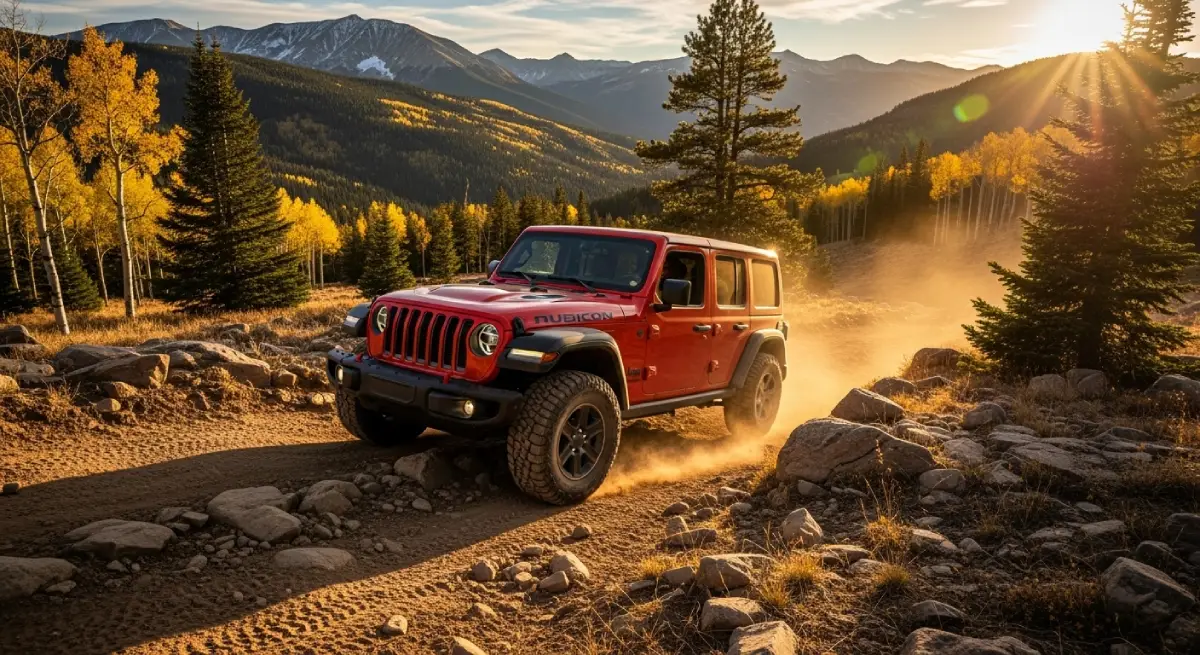
Cottonwood Pass isn't just another scenic Colorado drive—it's a 19.2-mile psychological trap that convinces tourists in rental sedans they're qualified for high-altitude adventure, while simultaneously serving as the gateway to Taylor Park's 750+ miles of legitimate off-road terrain that destroys assumptions about capability with ruthless efficiency.
The statistics reveal an uncomfortable pattern: this route generates more emergency calls per season than any comparable paved pass in the Sawatch Range, primarily because smooth asphalt creates false confidence about conditions that operate beyond sea-level experience.
best-jeep-trails-colorado
Most visitors experience less than 5% of what Cottonwood Pass actually offers because they photograph the summit, check social media, and return to Buena Vista without understanding they've merely reached the starting line for Colorado's most extensive backcountry trail network.
This isn't a destination—it's a decision point where paved convenience ends and authentic mountain challenges demand equipment, preparation, and honest assessment of capabilities versus ambitions.
Why Cottonwood Pass Earned Its Deceptive Reputation
The recently completed paving project tells a misleading story that highway departments don't advertise: Cottonwood Pass maintains the second-highest paved Continental Divide crossing in North America, creating atmospheric conditions that punish unprepared bodies and mechanical systems with equal indifference.
At 12,126 feet elevation, oxygen levels drop to roughly 60% of sea-level concentrations while ultraviolet radiation increases 25-30%, creating physiological stress that accumulates faster than most visitors recognize until symptoms force retreat or emergency response.
The reality that marketing materials carefully avoid: Your body's oxygen-carrying capacity decreases approximately 40% at Cottonwood Pass elevation. That cardiovascular system maintaining comfortable hiking pace at 5,000 feet struggles with basic tasks at the summit—creating performance degradation that affects judgment when mountain conditions demand peak cognitive function.
Meanwhile, the pass serves as the primary access point for terrain that requires everything your comfortable paved ascent didn't teach you.
What makes Cottonwood Pass different from typical scenic drives:
Deceptive accessibility that masks genuine high-altitude dangers
Rapid weather transitions that trap unprepared visitors above treeline
Gateway position to technical terrain requiring legitimate 4x4 capability
Altitude effects that compound every physical and mechanical challenge
Limited emergency response resources when situations deteriorate
Taylor Park access that separates scenic tourists from serious adventurers
The Altitude Reality That Destroys Comfortable Assumptions
Cottonwood Pass combines smooth pavement with atmospheric conditions that create problems nowhere else in most people's driving experience: reduced oxygen affecting both human and engine performance, UV exposure that causes sunburn within 30 minutes even through car windows, and temperature gradients where valley warmth gives way to near-freezing summit conditions that shift throughout the day without warning. This isn't terrain where good intentions compensate for inadequate preparation.
The Paved Deception Section
The 2019 completion of full paving between Buena Vista and Taylor Park created a engineering marvel that simultaneously became a psychological trap. These roads accommodate motorhomes and passenger cars during summer months, creating the illusion that Cottonwood Pass represents casual mountain tourism rather than genuine alpine exposure.
Reality requirements that pavement doesn't eliminate:
Altitude acclimatization for visitors arriving from lower elevations
Cold weather gear despite summer calendar dates and warm valley temperatures
Lightning awareness protocols for afternoon thunderstorm development
Vehicle performance understanding at 40% reduced atmospheric pressure
Emergency preparedness for medical situations requiring extended response times
Why accessibility creates complacency: Modern highway engineering removes technical driving challenges while maintaining environmental hazards that punish assumptions about safety based solely on road surface quality rather than atmospheric reality.
The Lightning Exposure Sections
Summer afternoon patterns between June and September create thunderstorm development that transforms Cottonwood Pass from scenic destination to genuine danger zone within 30-60 minutes. These aren't distant weather events—they're localized electrical storms where above-treeline positions become strike zones while escape routes require descent times that don't accommodate urgent retreat.
What lightning danger actually means on Cottonwood Pass:
Storm cell development that occurs faster than descent capability allows
Treeline elevation that leaves summit area completely exposed to strikes
Afternoon timing that coincides with peak tourist traffic and photography stops
Electrical discharge that seeks highest objects in exposed terrain profiles
Zero shelter availability in the alpine environment surrounding the pass
Temperature and Weather Variability
The 4,000+ foot elevation gain from Buena Vista creates temperature differentials where valley conditions provide zero indication of summit reality. Morning departures in 70-degree comfort arrive at exposed passes experiencing 40-degree temperatures with 40mph winds that create effective temperatures below freezing even during peak summer months.
Conditions that end scenic drives prematurely:
Snow accumulation that persists through July at summit elevation
Wind exposure that makes comfortable standing impossible without proper clothing
Rain that turns to sleet within minutes as elevation increases
Visibility reduction from cloud cover that eliminates scenic value entirely
Hypothermia risk for inadequately dressed tourists during extended exposure
The Taylor Park Gateway: Where Real Adventure Actually Begins
Cottonwood Pass serves as the paved access route to Taylor Park—a high alpine basin containing more off-road trail mileage than most states offer in their entire public land inventory. This isn't recreational driving for the weekend warrior crowd; this is sustained technical terrain that tests vehicle modifications and driver skills against obstacles that eliminate unprepared attempts with expensive efficiency.
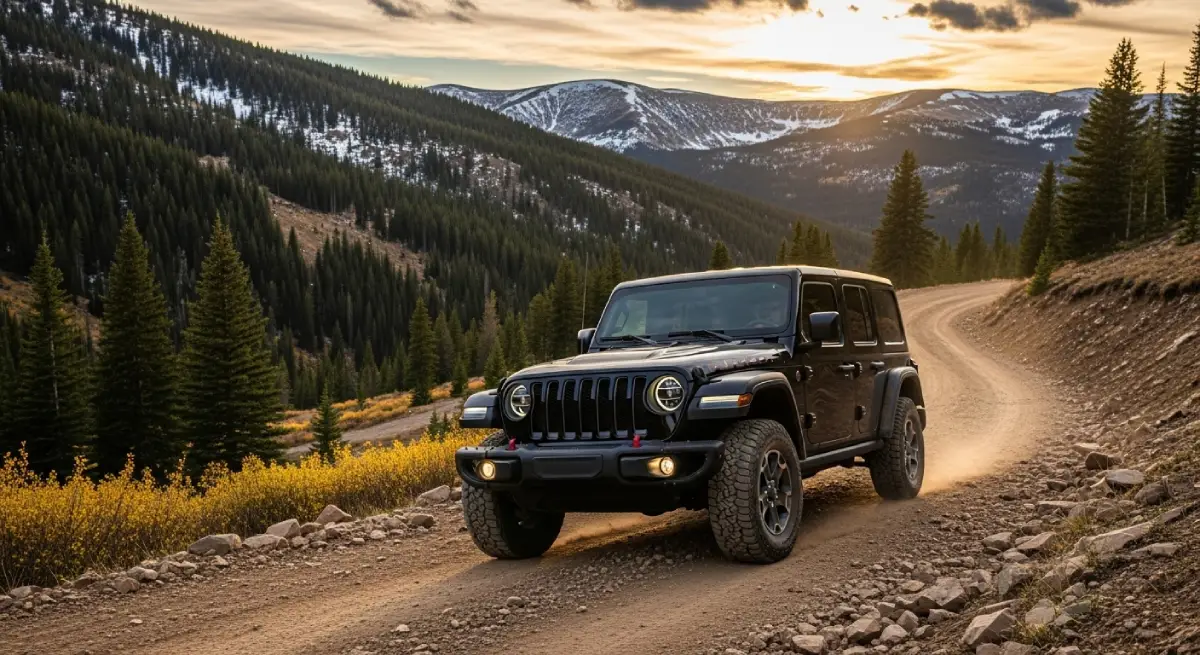
The Taylor Park Trail Network
Trail system statistics that separate tourists from adventurers:
750+ miles of designated OHV routes in the immediate area
Multiple 4x4 passes including Taylor Pass, Tincup Pass, and Cumberland Pass
Technical difficulty ranging from moderate forest roads to expert-only rock gardens
Elevation range from 9,000 feet to 13,000+ feet creating diverse challenges
Remote locations where recovery requires professional extraction services
Why smooth Cottonwood Pass access creates problems: Visitors assuming paved road capability translates to dirt trail competence discover expensive lessons about the difference between accessibility and qualification when technical terrain demands systems their vehicles don't possess.
Technical Trail Requirements Beyond the Pass
The trails radiating from Taylor Park demand equipment specifications that comfortable highway cruising never develops: approach angles exceeding 35 degrees for ledge navigation, ground clearance minimum 10 inches with full load, skid plate protection for constant undercarriage contact, and low-range gearing that stock SUVs claim but rarely provide with adequate ratios for technical climbs.
Trail challenges that destroy unprepared vehicles:
Boulder fields with loose rock requiring precise line selection and momentum management
Creek crossings with submerged obstacles and variable depth creating traction challenges
Off-camber sections with exposure where mistakes become visible recovery situations
Sustained technical difficulty without bailout options once commitment is made
Altitude effects compounding mechanical stress during extended operation
Altitude Effects That Multiply Every Challenge
At 12,126 feet, Cottonwood Pass creates atmospheric conditions affecting both human physiology and mechanical systems in ways that lower-elevation experience never teaches. The reduced oxygen content doesn't just affect your engine—it affects your decision-making, physical coordination, and stress response when mountain conditions demand performance from drivers already operating at reduced capacity.
Engine Performance at Altitude
Power loss calculations at Cottonwood Pass elevation:
Naturally aspirated engines: 38-42% horsepower reduction from sea-level ratings
Fuel consumption: 15-20% increase for equivalent work output
Cooling system stress: Operating temperatures elevated 20-25% under load
Transmission heat: Significantly increased during sustained grades
Why forced induction matters: Turbocharged engines compensate for thin air by maintaining closer to rated power output, providing capability margins that naturally aspirated systems lose entirely at high altitude.
Human Performance Degradation
Most sea-level residents experience measurable performance decreases above 8,000 feet, with effects becoming pronounced at Cottonwood Pass summit elevation. Reduced oxygen affects cognitive function, physical endurance, and emotional regulation—all critical factors when navigating mountain conditions that punish poor decisions severely.
Altitude impact on visitor capability:
Reaction time slows 15-20% compared to sea-level baseline performance
Decision-making becomes impaired when rapid assessment is required
Physical exertion causes rapid fatigue during vehicle recovery or hiking activities
Headache and nausea symptoms affect 25-30% of rapid-ascent visitors
Stress amplification when combined with unfamiliar terrain challenges
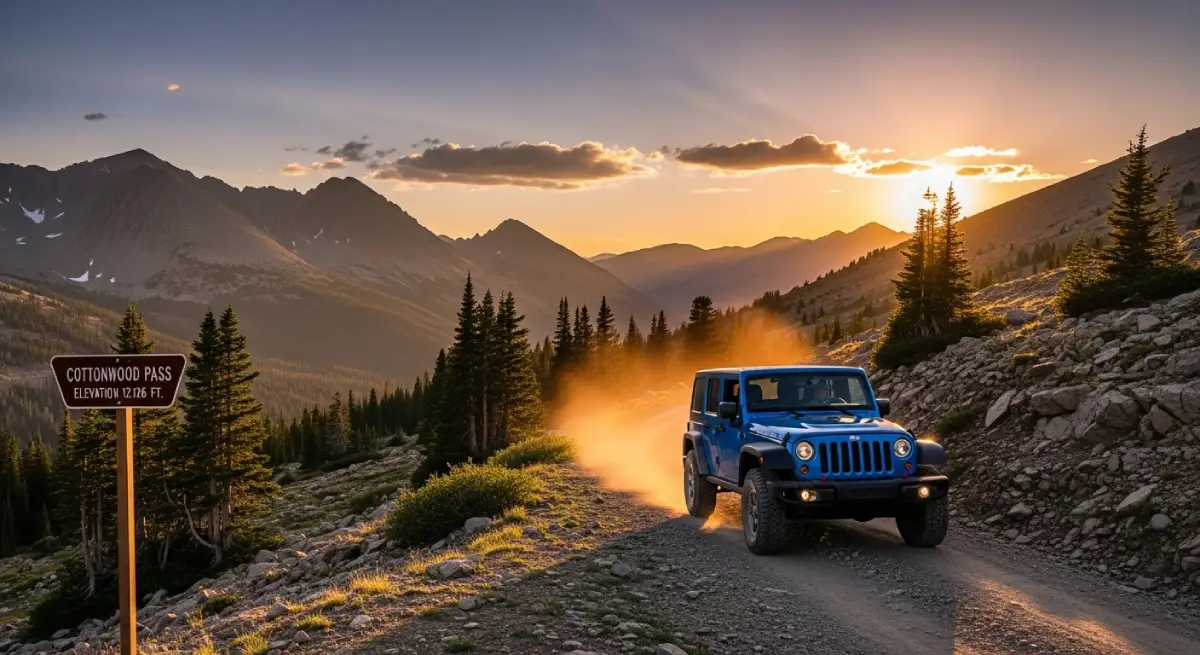
Weather Patterns That Transform Conditions Rapidly
Cottonwood Pass weather operates on mountain physics creating rapid transitions from safe to dangerous conditions. The elevation and Continental Divide position create microclimates where morning stability gives way to afternoon volatility with timing so predictable that locals plan activities accordingly while tourists experience surprise and frustration.
Morning vs. Afternoon Reality
Morning advantages (6 AM - 11 AM departures):
Stable atmospheric conditions with minimal convective activity
Clear visibility before afternoon cloud buildup obscures views
Lower traffic volume from overnight camping in Taylor Park
Cooler temperatures reducing heat stress during physical activity
Maximum safe window for extended exploration before weather development
Afternoon dangers (1 PM - 7 PM exposure):
Rapid thunderstorm development with lightning strike probability increasing hourly
Reduced visibility from cloud cover eliminating scenic photography opportunities
Temperature drops that create hypothermia risk for inadequately prepared visitors
Traffic congestion from day-trippers creating delays during retreat necessity
Hail possibility that damages vehicles and creates dangerous driving surfaces
Why Cottonwood Pass Demands Professional Equipment
The choice between attempting Taylor Park's trail network in personal vehicles versus utilizing professional services like Cliffhanger Jeep Rentals often determines whether mountain exploration becomes memorable achievement or expensive mistake requiring recovery services and insurance claims.
Purpose-Built Vehicle Advantages
Cliffhanger's fleet provides capabilities that personal vehicles lack:
Suspension modifications with extended travel for sustained rough terrain absorption
Tire compounds and sizes optimized for variable surface conditions and rock traction
Skid plate protection preventing damage from constant undercarriage contact
Recovery equipment including winches and extraction gear when situations deteriorate
Regular maintenance schedules addressing high-altitude operation stress
Local Knowledge and Route Guidance
Professional rental services provide context that map apps can't deliver:
Current trail conditions including recent storm damage and seasonal obstacles
Route recommendations matching actual capability rather than optimistic assessment
Weather pattern familiarity for timing decisions that avoid dangerous exposure
Emergency protocols and support when mechanical or medical issues develop
No long-term ownership costs for specialized equipment used occasionally
Insurance and Liability Protection
Personal vehicle insurance policies typically exclude coverage for off-road activities, leaving owners responsible for recovery costs and repair expenses when trail conditions exceed vehicle or driver capabilities—situations that occur more frequently than optimistic planning acknowledges.
Pre-Trip Planning That Separates Success from Disappointment
Most Cottonwood Pass failures result from inadequate preparation rather than technical mistakes. The route demands specific advance work that accounts for altitude effects, weather variability, and the extended time requirements that mountain exploration creates when done properly.
Realistic Time Allocation
Common estimation errors: Most people underestimate Cottonwood Pass and Taylor Park exploration by 200-300%, planning 4-6 hour excursions that actually require 8-12 hours when accounting for altitude acclimatization, weather monitoring, and the slower pace that genuine exploration demands rather than rushed tourism.
Factors affecting completion time:
Group size and varying experience levels among participants
Current trail conditions and seasonal surface variations
Weather windows that force early returns or extended delays
Photography stops at scenic overlooks and historic sites
Physical breaks for altitude adjustment and meal requirements
Weather Monitoring Requirements
48-hour advance tracking: Cottonwood Pass weather requires monitoring conditions well before departure rather than same-morning assessments that work for lower-elevation activities. Afternoon thunderstorm probability develops predictably but creates genuinely dangerous situations for visitors caught above treeline.
Contingency planning: Successful mountain visits require backup alternatives when weather conditions make high-elevation exposure unsuitable, including lower valley activities that provide adventure without risks that severe weather creates at alpine elevations.
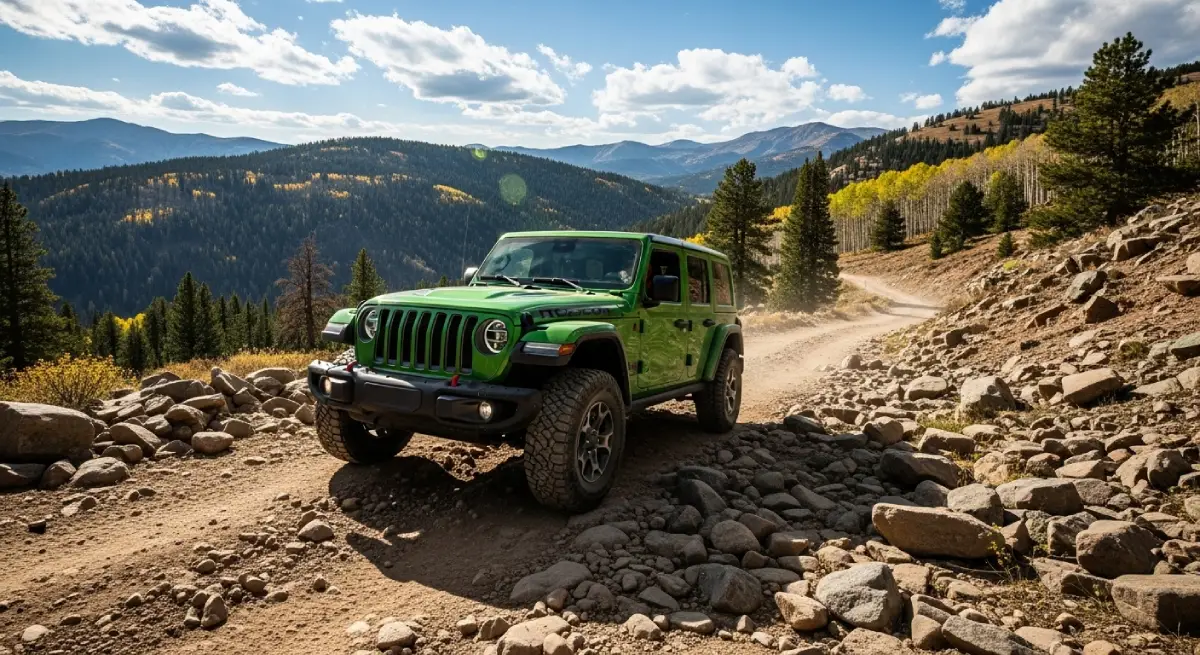
Emergency Preparedness Standards
Communication systems: Cell service is unreliable throughout most of Taylor Park, making satellite communication devices essential rather than optional for groups venturing into remote areas where mechanical failure or medical emergency requires outside assistance.
Essential equipment minimums:
First aid supplies appropriate for group size and remote location reality
Extra clothing layers for temperature extremes despite summer calendar dates
Food and water exceeding planned duration by significant safety margins
Emergency shelter capability for unexpected overnight situations
Vehicle recovery equipment if attempting trails beyond pass summit
Group Coordination and Safety Protocols
Optimal group composition: 2-3 vehicles provide safety redundancy without creating communication challenges that larger groups experience. Single-vehicle attempts eliminate safety margins that mountain conditions demand, while groups exceeding four vehicles create coordination complexity that slows progress and creates frustration.
Required capabilities per vehicle:
Driver with realistic assessment of skill level versus trail demands
Navigator with current maps, GPS systems, and backup navigation methods
First aid training appropriate for backcountry emergency response
Vehicle systems knowledge for basic troubleshooting and repairs
Environmental Responsibility on Cottonwood Pass
Alpine environments above treeline require decades to recover from damage caused by off-trail driving or inappropriate waste disposal. Cottonwood Pass crosses through ecosystems where vegetation disturbed today remains visibly impacted for 50+ years due to short growing seasons and harsh conditions limiting recovery.
Critical protection priorities:
Stay on designated routes regardless of surface conditions or shortcuts temptation
Pack out all waste including food scraps, gray water, and human waste
Camp only in designated areas below treeline where impact is manageable
Minimize noise disturbance in wildlife habitat during sensitive seasons
Support trail maintenance organizations preserving public access through volunteer work
The Reality of Cottonwood Pass Success
Cottonwood Pass rewards thorough preparation while punishing assumptions based solely on paved surface quality. Success requires meeting altitude demands through proper acclimatization, weather monitoring eliminating dangerous exposure, and honest equipment assessment determining whether personal vehicles or professional rentals provide appropriate capability.
What successful exploration actually requires:
Realistic capability assessment versus marketing claims about vehicle ratings
Altitude acclimatization protocols for visitors arriving from lower elevations
Weather monitoring and flexible timing willing to postpone for safety
Emergency preparedness exceeding optimistic minimum expectations
Professional equipment when trail ambitions exceed personal vehicle specifications
Why Professional Services Transform the Experience
The choice between attempting Taylor Park exploration in personal vehicles versus partnering with services like Cliffhanger Jeep Rentals often determines whether mountain adventure becomes successful achievement or expensive lesson in assumption versus reality.
Professional service advantages:
Purpose-built vehicles with proven modification combinations for local terrain
Comprehensive knowledge about current conditions and route-finding requirements
Full insurance coverage for off-road activities that personal policies exclude
Emergency support and recovery capabilities when situations exceed expectations
No long-term ownership costs for specialized equipment used occasionally
Making the Commitment to Cottonwood Pass
Cottonwood Pass represents the intersection of modern engineering that creates accessibility with natural forces that demand respect regardless of pavement quality. The route doesn't accommodate assumptions about safety based solely on road surface—it provides immediate feedback about the difference between casual tourism and genuine mountain exploration.
Building toward Cottonwood Pass readiness:
Altitude acclimatization through gradual elevation increase over multiple days
Weather monitoring skills understanding mountain storm development patterns
Physical conditioning appropriate for reduced oxygen performance capacity
Vehicle capability assessment determining personal equipment adequacy
Professional service utilization when ambitions exceed personal resources
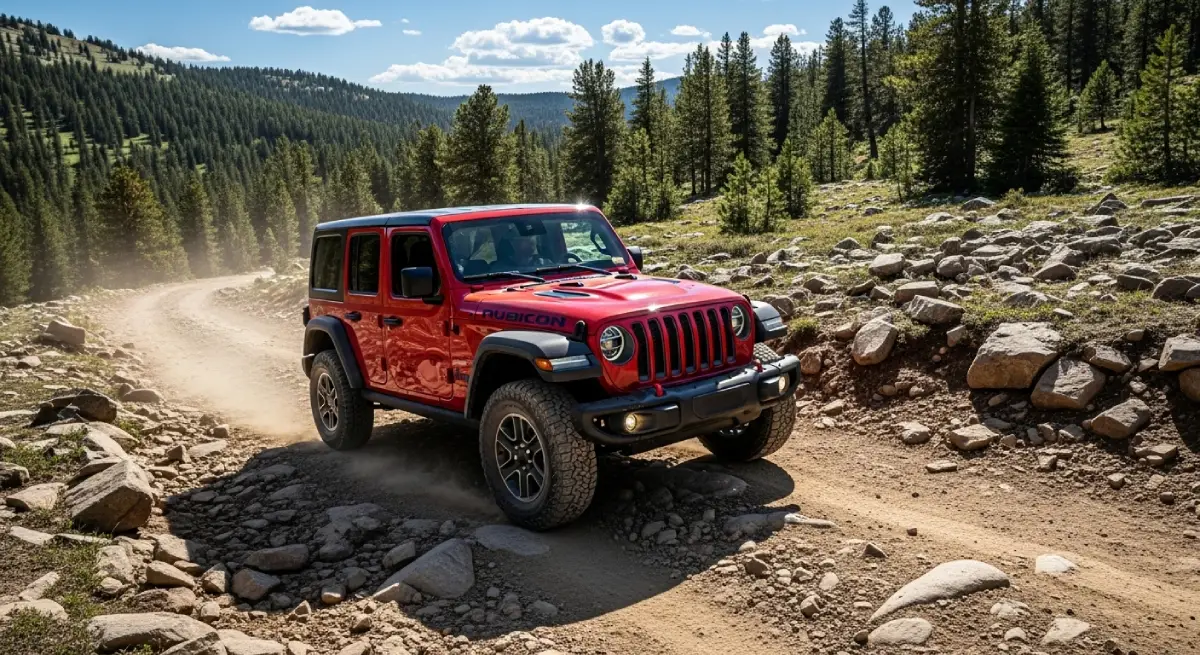
The Bottom Line: Earning Cottonwood Pass Success
Cottonwood Pass doesn't care about your vehicle's MSRP, your social media following, or your confidence level. It presents atmospheric challenges that demand specific preparation and punishes inadequate planning with consequences ranging from disappointing shortened trips to genuine emergency situations requiring rescue response.
The geological and atmospheric forces that created these conditions operated with consistency and power over millions of years, creating environmental realities that test human preparation and judgment against natural systems following physical laws rather than tourist expectations.
Whether you choose to develop capabilities for high-altitude exploration in personal vehicles or partner with professional services that provide purpose-built equipment and local expertise, success depends on honest assessment of requirements versus current preparation rather than hoping determination can substitute for proper planning.
The most rewarding Cottonwood Pass experiences come from meeting legitimate challenges through competent preparation rather than discovering personal limitations through shortened trips and disappointed expectations.
Ready to experience Cottonwood Pass and Taylor Park the right way? Cliffhanger Jeep Rentals provides the specialized vehicles, expert guidance, and safety support that transform Colorado's most deceptive gateway from potential disappointment into successful adventure. The trails are waiting—but they only reveal their secrets to those prepared to meet them with appropriate respect and proven capability.
Experience Cottonwood Pass with confidence through Cliffhanger Jeep Rentals—where every vehicle is built for challenges that separate authentic adventure from expensive mistakes.


